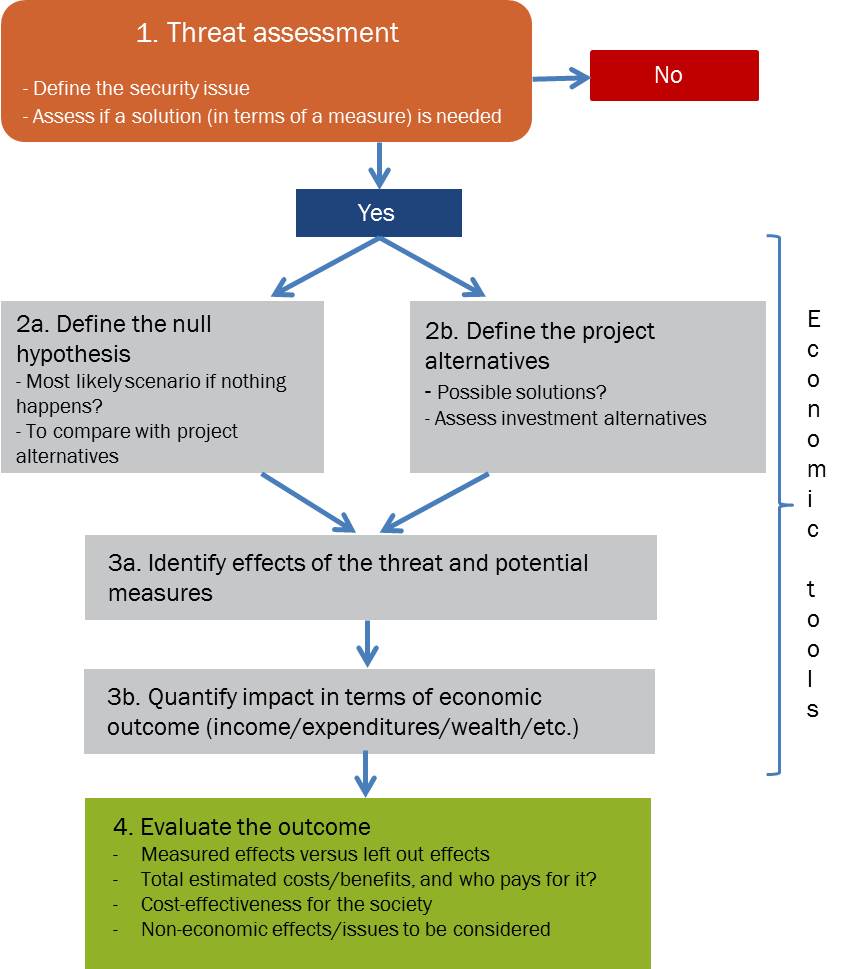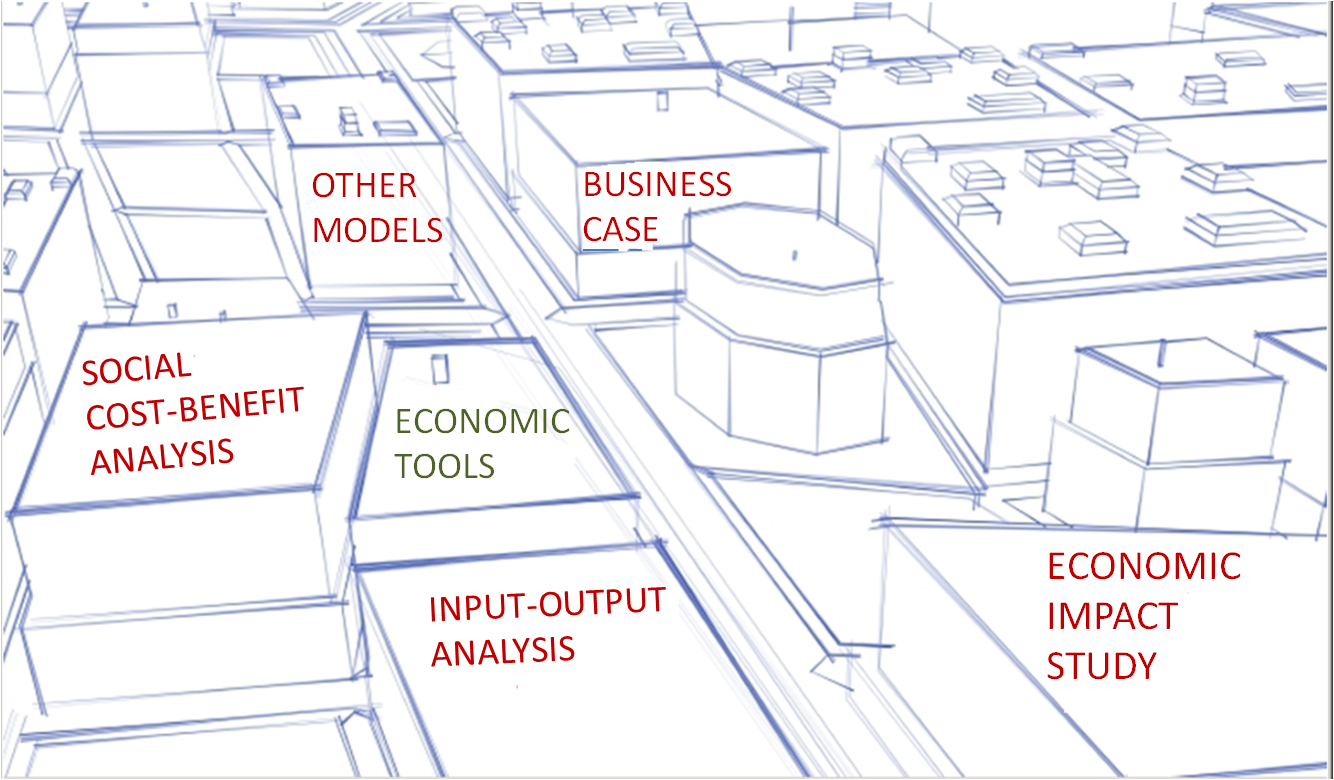Economic tools
Economic tools (or tools of economic analysis) facilitate the preparation of a robust urban plan in the urban planning process encouraging economic development in a way that is conducive to and compatible with sustainability objectives. Put differently, they influence the way planned urban objects and urban environments are going to be shaped. Furthermore, economic tools are applied to measure the economic impact of existing urban objects, but also security threats (and indirect security measures). In essence, they are urban planning tools (though not solely used by urban planners).
Contents
Description
Knowledge about some frequently used economic tools and techniques can help the urban planner to systematically survey all the relevant (socio-economic) impact caused by an urban development and security threats. This insight will help the responsible urban planners to make the best choices from an socio-economic point of view.
Economic assessment step by step
Economic tools can assist urban planners (or other decision makers) determining the pros and cons of different types of security measures (project alternatives). The (click able) flow chart below illustrates the 4 main steps in the decision process of this economic assessment.
Flow chart economic assessment
- Step 1:In preparation of the use of economic models it is very important to assess the problem in terms of definition (type of security issues), but also in terms of urgency of a solution. Vitruv's risk assessment tool (SecuRbAn) is an example of a tool that facilitates urban planners to identify possible security issues. Nevertheless, one should always involve experts and political decision makers before one starts the implementation of security measures for reasons explained below.
- Step 2:
It has to be noted that in general it is very difficult to quantify the economic impact of urban development, urban objects, crime, security measures, and so on. This is especially true for the benefits since they are in most of the cases non-economic, e.g. urban development as a catalyst for business investments, health benefits of less crime, the benefits of living in a safe area due to security measures, etc. Moreover, while economic analysis is common in many contexts, the results of these studies depend largely on the used methodologies, including the underlying (subjective) assumptions and measured effects.[1]. Nevertheless, it remains relevant for urban planners (especially on a more strategic level) to gain insight into the economic dimension of urban planning and security threats/measures. In the words of professors Ken Pease and Martin Gill[2],"[economic]Cost benefit analysis is always helpful, sometimes necessary but seldom sufficient as a basis for decision-making".
Users of economic tools
Economic tools can be used by economists (specialists) but also by specialised is an attribute of::urban planners in socio-economic appraisal. These economic models, however, do not come without fundamental and methodological limits that have to be considered.
Types of economic tools
Urban planning processes employ a host of economic tools/models:
- Social cost-benefit analysis
- Input-output analysis
- Economic impact study
- Business case
- Other economic tools
See also the clickable map below:
Related subjects
And:


